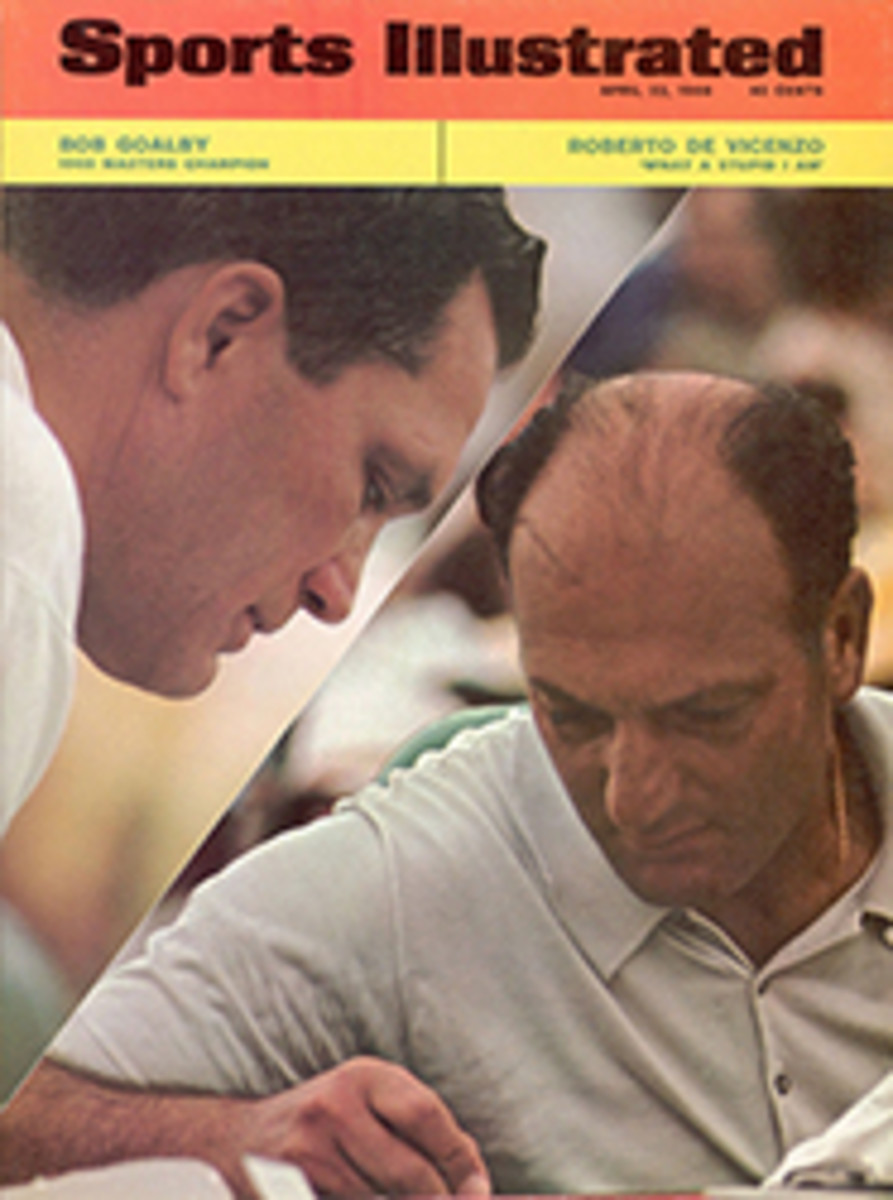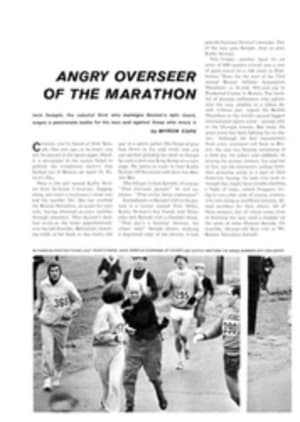
A farewell to Jimmy Clark
Jim Clark and I both flew our planes into Germany for the race at Hockenheim. The weather was pretty bad—I was in a snowstorm for quite a bit—and it rather caught us out. But when the airport asked whether we were able to land on instruments we both breathed a sigh of relief and said we could. And so we did, Jimmy in a Piper Twin Comanche and I in a Piper Aztec.
Jim's car for the race was very new. It had only been raced once before, and that was the previous week at Barcelona. I had tested it myself at Silverstone for 200 miles, and there were no problems; it was a very nice car.
The race was to be run in two heats of one hour each. I was a few seconds behind Jimmy when his car went off the road on the fifth lap and didn't see anything actually happening; all I could see were some tire marks in the wet going off into the trees. At that point we were doing something like 150 mph. Although the track was wet, it was on a very gentle curve to the right that didn't really require any driving skill to negotiate even flat out. Naturally, I never assumed that it was Jimmy who had crashed and was told only when I finished the heat.
We withdrew my car from the second heat and went out to collect the remains of Jim's car. A marshal standing at just about that point said that the car started to snake—the back end going from one side to the other—and then the car went sideways across the track and into the trees.
Now the bits are all back at Lotus. They've inspected them thoroughly and haven't yet found anything to really pinpoint the cause of the accident, but it is just obvious that something must have gone wrong with the car. It is just one of those inexplicable things, like Stirling Moss's accident at Goodwood in 1962 which put him out of racing. Moss went straight off the track, and no reason has ever been found.
I am sure that it wasn't Jimmy's fault at Hockenheim. Everyone was taking that curve fiat out, and Jimmy was the best man in the race—and best in the world. He was that because he just had all the requirements; he was a natural athlete with very good muscular coordination and a very good eye. He had a springy step; he was light on his feet. He had rhythm. His judgment was excellent, and his reactions were very fast.
He was also particularly competitive, particularly aggressive, but he combined this with an extremely good sense of what not to do. One can be overthrusting—aggressive to the point of being dangerous. Well, this Jimmy was not. But he was a fighter, a fighter that you could never shake off. He invariably shot into the lead and killed off the others, building up a lead that sapped their will to win.
For a driver, the excitement of racing is controlling the car within very fine limits. It's a great big balancing act, motor racing. It's having the car broken away and drifting and doing exactly as you want it to do and getting around the corner as quickly as you can, and knowing that you've done it, and hoping that it is better than anyone else has done. You are aiming at perfection and never actually getting it. Now and then you say, "That's it. That's how I want to do that corner. Now beat that, you bastards." This is the essence of racing, and at this, Jimmy, in his era, was unsurpassed.
Comparing him with champions of other eras is terribly difficult, but surely this is true: in their respective times Juan Manuel Fangio, Stirling Moss and Jim Clark were the greatest drivers. Fangio was just that fraction of a second quicker in a Grand Prix car than Moss. Moss was a better all-rounder for any type of racing. Then we look at Jimmy's record. He has won more Grand Prix races than any other driver; you just can't refute that. He did it all with the same car—with Lotus—and this combination of Colin Chapman the constructor and Jim Clark the driver was very strong. You've just got to take the two together, because Chapman designed the cars, and it was a parallel success story.
And Jimmy was happiest in those cars which he controlled in a very relaxed fashion. When he was not racing he was not so relaxed. If you saw him sitting in a chair in the same room with you he'd probably be biting his nails; he always bit his nails. He was like a highly bred racehorse—high-strung, slightly nervous, not always confident in the presence of other people. He didn't like being driven in a car by others. We had occasion to drive from Cologne to Monte Carlo and back recently in a Ford car as a publicity stunt. When I was driving, he'd be biting his nails. He'd be saying, "For God's sake, look out there." He could never understand, when I was the passenger, why I could just sit there while he was making the odd mistake. He'd say, "For God's sake, say something."
But he enjoyed life. He had a fabulous life, and he enjoyed it and made the most of it, though basically he was very shy. Brought up on a farm as he was, at heart he was a farmer. I mean that in the kindest sense. He owned one farm and his father another. He came from a rustic way of life, which was in complete contrast with the life he was leading as a driver, and he thoroughly enjoyed going back to his own farm.
Because of the limelight that he found himself bathed in through his skill at motor racing, he obviously had to submerge his shyness and emerge as a personality. Which he did. But he did find it difficult. He made no bones about not liking to make speeches, but he had to do it, and I had seen him getting better and better at making them.
He had been thrown into the jet set, which is vastly different from the simple life of the country, and every now and then you could see that he was uncomfortable in it. His simple, natural outlook would show itself. It was very touching to find someone who wasn't hard and cynical. He was a warm, honest, shy person who was coping with all this—the pressure and the publicity.
The service was held on a sunny, chilly day in a lovely little stone church in Chirnside, only three or four miles from his farm. Jimmy was buried in the small churchyard in a simple, light-colored wood coffin. His four sisters and his mother and father were there, and they were all very brave and sweet. I got through it all right until I tried to sing, and then I began to get just a bit too emotional.
After the service we went back to Jim's home, where his family entertained his closest friends. This turned out to be a much happier affair than I could possibly have imagined, and one which Jim, I'm sure, would have thoroughly approved of. It was a most sincere tribute to Jim.
PHOTO
CLARK THOROUGHLY ENJOYED HIS RARE VISITS HOME TO HIS SCOTTISH FARMHOUSE

